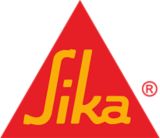
Sikaflex®-256
AUTOGLASS REPLACEMENT ADHESIVE
Sikaflex®-256 is a cold applied Automotive Glass Replacement adhesive which can be easily applied with manual application guns. Sikaflex®-256 has a long open time and thus it ensures a safe application even under warm conditions.
- Easy to extrude with manual application gun
- Good bead stability and non-sag properties
- Automotive OEM Quality


